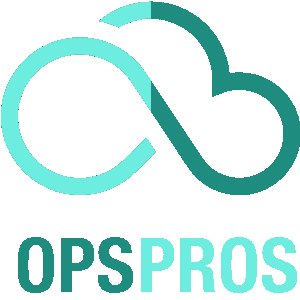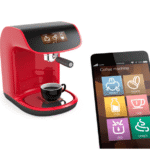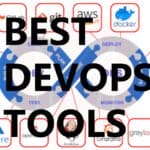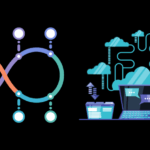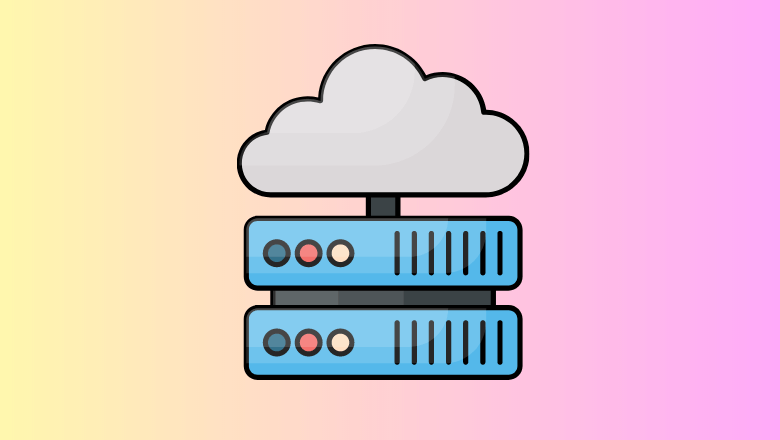
The Calmr Approach to DevOps Includes Automation, unlocking a world of efficiency and innovation that revolutionizes software development!
Understanding the Calmr Approach can significantly improve your DevOps practices. So, let’s dive right in!
The Calmr Approach: What’s the Big Idea? 💡
Calmr is an acronym representing the core principles of the approach: Collaboration, Automation, Lean, Measurement, and Repeatable. The Calmr Approach aims to streamline the DevOps process, ensuring the seamless delivery of high-quality software.
Key Takeaway: The Calmr Approach integrates five essential principles to enhance DevOps practices and deliver software more efficiently.
Collaboration: Teamwork Makes the Dream Work 🤝
In the Calmr Approach, collaboration is critical. Successful DevOps practices require cross-functional teams to work together, breaking down silos and fostering a culture of shared responsibility.
Exemplify: Imagine a development team working with the operations team, discussing application requirements, and designing infrastructure together.
Pro Tip: Implement regular meetings between development and operations teams to discuss ongoing projects and potential improvements.
Automation: Let the Machines Do the Work 🚀
Automation is a cornerstone of the Calmr Approach. Automating repetitive tasks eliminates manual errors, speeds up deployment, and increases overall productivity.
Exemplify: Automating testing procedures ensures that code is always checked for bugs before deployment, reducing software failure risk.
Pro Tip: Start by automating simple tasks like code deployment and gradually move on to more complex processes such as infrastructure provisioning and monitoring.
Lean Principles: Less Is More 🌿
Eliminating waste and streamlining processes increases efficiency and reduces costs with lean principles.
Exemplify: If your team spends hours manually deploying code, adopting a lean mindset can help identify and eliminate unnecessary steps, saving valuable time and resources.
Pro Tip: Perform regular value stream mapping exercises to identify bottlenecks and areas of improvement.
Continuous Testing: Ensuring Quality ⚙️
Continuous testing is a vital component of the Calmr Approach. You consistently run tests throughout development to ensure your software is reliable and meets quality standards.
Exemplify: Integrate automated testing tools into your delivery pipeline to catch defects early and reduce the time for fixes.
Pro Tip: Regularly review and update test cases to maintain relevance and accuracy, ensuring comprehensive coverage.
Continuous Delivery Pipelines: Streamlined Deployments 🌊
Effective continuous delivery pipelines are essential for rapid value delivery. By automating and optimizing your pipeline, you can reduce delays in flow and enhance the overall efficiency of your software delivery process.
Exemplify: Implement tools and practices to seamlessly transition between the development, testing, and deployment stages.
Pro Tip: Continuously monitor and analyze pipeline performance, identifying bottlenecks and areas for improvement.
Production or Production-like Environments: Realistic Testing 🧪
Testing in production or production-like environments is crucial to ensure the performance and reliability of your solutions. By real-world simulating conditions, you can identify and address potential issues before they impact customers.
Exemplify: Use staging environments, feature flags, and production traffic cloning to validate your solutions under realistic conditions.
Pro Tip: Regularly update your testing environments to reflect the current state of your production systems, ensuring accurate and relevant testing.
Categories of Tools: Optimizing Your Toolset 🛠️
Selecting the right tools for your DevOps processes maximizes efficiency and effectiveness. You can create a cohesive and streamlined development ecosystem by choosing tools complementing one another.
Exemplify: Categorize tools based on functionality, such as code repositories, CI/CD platforms, monitoring solutions, and security tools.
Pro Tip: Evaluate tools based on their compatibility, ease of integration, and ability to scale with your organization’s needs.
Learning Process: Fostering Growth and Development 🌱
The Calmr Approach emphasizes the importance of continuous learning and skill development. By investing in your team’s growth, you can ensure they’re equipped to handle the challenges of modern software development.
Exemplify: Provide access to training resources, workshops, and conferences, as well as support for pursuing certifications and further education.
Pro Tip: Encourage a culture of knowledge sharing and collaboration, fostering an environment where team members can learn from one another.
Security of Product Innovation: Safeguarding Your Ideas 🔐
Protecting the security of your product innovation is crucial in today’s competitive landscape. Proactively addressing security vulnerabilities can safeguard your intellectual property and maintain customer trust.
Exemplify: Implement secure coding practices, regular security audits, and vulnerability scanning to minimize potential risks.
Pro Tip: Foster a security-focused mindset within your organization, ensuring all team members prioritize security.
Concept to Cash: Accelerating Value Delivery 💡💰
The Calmr Approach emphasizes the importance of streamlining the “concept to cash” process, ensuring that ideas are rapidly transformed into valuable solutions for customers. By optimizing this process, you can stay ahead of the competition and maximize your return on investment.
Exemplify: Implement lean and agile methodologies to accelerate the development and deployment of new features and enhancements.
Pro Tip: Continuously measure and optimize your value stream, identifying bottlenecks and opportunities for improvement.
DevOps Concept: Embracing a Holistic Approach 🌐
The Calmr Approach is built on the core DevOps concept, emphasizing collaboration, automation, and continuous improvement. Adopting a holistic approach to software development ensures that your organization remains agile and competitive in today’s fast-paced market.
Exemplify: Foster cross-functional collaboration, breaking down silos and encouraging teamwork across all areas of your organization.
Pro Tip: Continuously evaluate and refine your DevOps practices, ensuring they align with your organization’s goals and objectives.
Recovery Plans and Attempt Costs: Preparing for the Unexpected 🚨
Incorporating recovery plans into your DevOps strategy is essential for mitigating risks and minimizing the impact of unforeseen issues. By planning for potential failures, you can reduce attempt costs and ensure the stability of your solutions.
Exemplify: Develop contingency plans for potential production incidents, including automated rollbacks, failover strategies, and disaster recovery protocols.
Pro Tip: Regularly review and update your recovery plans to account for infrastructure and technology stack changes.
Exam Cost and Study: Investing in Your Team’s Success 🎓💰
Exam cost and study resources are crucial investments in your team’s success. You can empower your team to excel in DevOps by providing access to certification exams and supporting their learning process.
Exemplify: Allocate a budget for certification exams and provide access to study materials, such as online courses, textbooks, and workshops.
Pro Tip: Encourage your team to share their learning experiences and insights, fostering a collaborative and supportive learning environment.
Current Value Stream and Stream Management: Optimizing Your Processes 📈
The Calmr Approach emphasizes optimizing your current value stream and stream management processes. By identifying inefficiencies and refining your workflows, you can deliver value to customers more rapidly and effectively.
Exemplify: Use value stream mapping and lean methodologies to analyze and optimize your development processes.
Pro Tip: Regularly review your value stream and adjust your processes to accommodate changes in your organization’s goals and objectives.
Agile Transformation: Embracing Flexibility and Adaptability 🏃♂️
An agile transformation is a crucial aspect of the Calmr Approach, enabling your organization to adapt to customer needs and market conditions rapidly. By embracing agile methodologies, you can ensure your team remains flexible and responsive.
Exemplify: Implement Scrum, Kanban, or other agile frameworks to facilitate iterative development and continuous improvement.
Pro Tip: Foster a culture of openness and adaptability, empowering your team to embrace change and learn from their experiences.
The Idea to Cash: Streamlining Your Pipeline 🌟💰
Optimizing the “idea to cash” pipeline is essential for maximizing the value of your DevOps efforts. By streamlining the process of transforming ideas into valuable customer solutions, you can stay ahead of the competition and drive business success.
Exemplify: Implement lean and agile practices to accelerate new features and enhancements in development and delivery.
Pro Tip: Continuously monitor and refine your pipeline, identifying bottlenecks and opportunities for improvement.
Community Platform and DevOps Community: Leveraging Collective Knowledge 🌐
Engaging with a community platform and the broader DevOps community can provide invaluable insights and support for your team. By tapping into the collective knowledge of industry experts, you can accelerate your team’s growth and development.
Exemplify: Participate in online forums, attend industry conferences, and join local meetups to connect with other professionals and share knowledge.
Pro Tip: Encourage your team to engage with the DevOps community as learners and contributors actively.
DevOps Practitioner: Building Expertise and Competence 👩💻
Developing your team members as DevOps Practitioners is critical to the Calmr Approach. Investing in their growth and development can drive your organization’s success.
Exemplify: Support your team in pursuing certifications, attending workshops, and engaging in other professional development opportunities.
Pro Tip: Foster a continuous learning and knowledge-sharing culture, empowering your team to grow and excel in their roles.
Processing Time: Boosting Efficiency and Productivity ⏲️
Reducing processing time is a crucial objective of the Calmr Approach. By optimizing your workflows and eliminating bottlenecks, you can improve the efficiency and productivity of your team.
Exemplify: Use automation and lean practices to streamline your development processes and reduce time spent on manual tasks.
Pro Tip: Regularly review your workflows and identify opportunities for improvement, ensuring your team can respond effectively to changing conditions.
Lean Flow: Minimizing Waste 🌿
Lean flow is a core principle of the Calmr Approach, focusing on eliminating waste and maximizing value delivery. Minimizing delays in flow can ensure your solutions reach customers as quickly as possible.
Exemplify: Apply lean principles to your development process, such as limiting work-in-progress and prioritizing high-impact tasks.
Pro Tip: Regularly review and refine your workflow, identifying inefficiencies and areas for optimization.
Continuous Deployment: Release on Demand 🚦
In the Calmr Approach, continuous deployment enables the delivery of business value whenever needed. By automating the release process, you can minimize risk and ensure your solutions are always ready for production.
Exemplify: Use feature toggles and automated rollbacks to minimize deployment risk and facilitate rapid releases.
Pro Tip: Develop a release strategy that aligns with your organization’s risk tolerance and business objectives.
Continuous Security: Protecting Your Solutions 🔐
Incorporating continuous security practices into your development process is crucial for maintaining the integrity of your solutions. You can minimize risks and protect customer data by proactively addressing vulnerabilities and threats.
Exemplify: Integrate security scanning and monitoring tools into your delivery pipeline to catch vulnerabilities before they become critical.
Pro Tip: Foster a security-focused culture within your organization, ensuring all team members prioritize security.
Manual Processes: Identifying Opportunities for Automation 🤖
Reducing manual processes is a crucial objective of the Calmr Approach. Automating repetitive tasks can improve efficiency and allow your team to focus on higher-value activities.
Exemplify: Review your current workflows and identify tasks that can be automated, such as code reviews, testing, and deployment.
Pro Tip: Invest in tools and technologies that can facilitate automation while providing your team with the necessary training and support.
Membership and DevOps Competencies: Developing Expertise 🎓
Cultivating DevOps competencies within your organization is essential for success. Offering membership opportunities, such as one-year programs or certification courses, can help your team members develop the skills needed to excel in their roles.
Exemplify: Encourage team members to pursue professional certifications, like the DevOps Engineer or Agile Practitioner, to demonstrate their expertise.
Pro Tip: Provide access to learning resources, mentorship, and training opportunities to support continuous skill development.
Building Quality: Ensuring Solution Excellence 🔍
A commitment to building quality into your solutions is central to the Calmr Approach. Improving solution quality and resiliency can increase customer satisfaction and reduce the likelihood of production incidents.
Exemplify: Implement rigorous testing practices, code reviews, and performance monitoring to ensure your solutions meet the highest quality standards.
Pro Tip: Encourage a culture of accountability and ownership within your team, with each member taking responsibility for the quality of their work.
Delivery Time: Accelerating Value Delivery ⏱️
Reducing delivery time is a critical goal in the Calmr Approach. By optimizing your processes and workflows, you can accelerate value delivery to customers and gain a competitive advantage.
Exemplify: Implement continuous integration and deployment practices to streamline your delivery pipeline.
Pro Tip: Metrics and performance indicators can be used to track your progress and identify areas for improvement.
Iterations: Embracing Change and Adaptability 🔄
Iterations are crucial in the Calmr Approach, allowing your team to respond rapidly to changing customer needs and market conditions. By embracing iterative development cycles, you can continuously refine your solutions and deliver customer value more efficiently.
Exemplify: Use agile methodologies like Scrum or Kanban to facilitate iterative development and ongoing improvement.
Pro Tip: Set clear iteration goals and priorities, ensuring your team stays aligned and focused on delivering value.
Continuous Flow: Streamlining Your Processes 🌊
Achieving continuous flow is a crucial objective of the Calmr Approach. By optimizing your workflows and removing bottlenecks, you can ensure that your solutions progress smoothly through the development process.
Exemplify: Implement lean practices, such as value stream mapping and process automation, to identify and eliminate inefficiencies in your workflows.
Pro Tip: Regularly review and adapt your processes as needed, ensuring your team can respond effectively to changing conditions.
Solution Stack and Technical Practices: Building on a Solid Foundation 🏗️
The Calmr Approach emphasizes the importance of a robust solution stack and solid technical practices. By using reliable tools and technologies, you can improve the performance and resiliency of your solutions.
Exemplify: Choose a solution stack that meets your team’s needs and supports your organization’s goals while investing in continuously developing your team’s technical skills.
Pro Tip: Regularly evaluate and update your toolset, keeping you current with industry best practices and emerging technologies.
Deployment Activities: Automating for Efficiency 🚀
Automating deployment activities is a vital aspect of the Calmr Approach. Streamlining these processes can reduce the likelihood of production failures and minimize the time required for updates and fixes.
Exemplify: Implement tools and practices that facilitate deployment automation, such as continuous integration, containerization, and infrastructure as code.
Pro Tip: Continuously monitor and analyze your deployment processes, identifying opportunities for improvement and optimization.
Measurement: Tracking Success 📊
Measurement is vital for understanding the effectiveness of your DevOps practices. By tracking key performance indicators (KPIs), you can identify areas for improvement and gauge the impact of changes.
Exemplify: Monitoring deployment frequency can help determine if your team delivers software at the desired pace.
Pro Tip: Define KPIs that align with your organization’s goals and use monitoring tools to track them continuously.
Repeatable Processes: Consistency Is Key 🔁
The Calmr Approach emphasizes the importance of repeatable processes. By standardizing processes, you can reduce variability, ensure consistent quality, and make improvements more manageable.
Exemplify: Creating standardized deployment procedures ensures that every release follows the same steps, reducing the risk of errors.
Pro Tip: Document all processes and create templates to ensure consistency across your organization.
Continuous Integration and Continuous Deployment (CI/CD) 🔄
Build, test, and deploy code is automated using CI/CD pipelines. By implementing CI/CD, you can accelerate deployment times and reduce the risk of human error.
Key Takeaway: CI/CD pipelines streamline the software delivery process, ensuring code is constantly tested and deployed efficiently.
Customers: Putting User Needs First 🎯
In the Calmr Approach, prioritizing customers’ needs is essential. You can tailor your solutions to deliver maximum value by understanding users’ requirements and pain points.
Exemplify: Collect user feedback to identify areas where your software can be improved, ensuring your team focuses on features that matter most to your customers.
Pro Tip: Use customer journey mapping to visualize the user experience and identify opportunities for improvement.
Security: Building Safe and Secure Solutions 🔒
Security should be a top priority in the Calmr Approach. Integrating security best practices throughout the development lifecycle protects your solutions against threats.
Exemplify: Implement secure coding practices, vulnerability scanning, and threat modeling to proactively identify and address security risks.
Pro Tip: Adopt a “shift-left” approach, embedding security considerations early in the development process to minimize vulnerabilities.
DevOps Transformation: Continuous Improvement 🔄
The Calmr Approach emphasizes the importance of continuous improvement. Embracing a DevOps transformation means always looking for ways to optimize processes and deliver value more efficiently.
Exemplify: Assess your current delivery pipeline, identify bottlenecks, and create an implementation plan to address these issues.
Pro Tip: Establish a culture of learning and growth within your organization, encouraging team members to share insights and best practices.
Agile Teams: Flexibility and Adaptability 🏃
Agile teams are a cornerstone of the Calmr Approach. By adopting agile practices, teams can respond more quickly to change and deliver solutions that better meet customer needs.
Exemplify: Organize your team into smaller, cross-functional units that can rapidly iterate and adapt to changing requirements.
Pro Tip: Use iterative development cycles like Scrum or Kanban to facilitate continuous and value delivery.
Solutions: Tailored to Customer Needs 🛠️
The Calmr Approach focuses on delivering solutions that address customer pain points and provides real value. You can develop solutions that genuinely improve customers’ lives by understanding user needs.
Exemplify: Engage customers in the development process, gathering feedback and iterating on your solutions to ensure they meet user expectations.
Pro Tip: Prioritize features based on customer feedback and business value, first focusing on delivering the most impactful improvements.
Plan: Roadmap to Success 🗺️
Developing a well-defined plan is crucial for implementing the Calmr Approach. Outline your goals, identify areas for improvement, and create a roadmap for success.
Exemplify: Create an action plan detailing the steps needed to improve your delivery pipeline, from continuous exploration to continuous integration.
Pro Tip: Regularly review and update your plan, adjusting your strategy to ensure you remain aligned with organizational goals and customer needs.
Concepts: Continuous Delivery and Deployment 🌐
Continuous delivery and deployment are essential concepts in the Calmr Approach. By automating these processes, you can reduce deployment risk and deliver value to customers more quickly.
Exemplify: Implement automated testing, deployment automation, and production monitoring to ensure your solutions are always ready for release.
Pro Tip: Embrace a low-risk release mindset, focusing on minor, incremental updates to minimize the time required for fixes and improvements.
Feedback Cycle: Learning and Growing 🔄
Establishing a robust feedback cycle is crucial in the Calmr Approach. You can drive continuous improvement by gathering insights from customers, team members, and production environments.
Exemplify: Use monitoring tools to gain insights into pipeline flow and the behavior of your solutions, identifying areas for optimization.
Pro Tip: Encourage open communication and learning, allowing team members to share feedback and ideas for improvement.
Infrastructure as Code (IaC) 🏗️
IaC allows you to define and manage infrastructure through code, streamlining the provisioning and management process. IaC makes infrastructure management more efficient, consistent, and repeatable.
Exemplify: Imagine defining your server configurations as code, enabling you to version control and automate infrastructure updates.
Pro Tip: Use popular IaC tools like Terraform or CloudFormation to start automating your infrastructure provisioning.
Automated Testing 🧪
Automated testing ensures that every code change is verified for quality, reducing the risk of defects entering production.
Exemplify: By incorporating automated unit tests, integration tests, and end-to-end tests, you can catch bugs early and ensure a stable release.
Pro Tip: Implement a test-driven development (TDD) approach to write tests before writing the code, ensuring comprehensive test coverage.
ChatOps 🗣️
ChatOps integrates communication tools with development and operational processes, enabling your team to collaborate, monitor, and control systems more effectively.
Exemplify: Imagine using a chat platform to deploy code or monitor system health, allowing your team to stay updated and respond quickly to issues.
Pro Tip: Integrate popular ChatOps tools like Slack or Microsoft Teams with your CI/CD pipelines and monitoring systems to boost collaboration.
Embracing Automation: Best Practices 🏆
Now that we’ve covered real-life examples let’s discuss some best practices for embracing automation in your DevOps journey.
Start Small and Iterate 🌱
When adopting automation, start small and gradually expand your efforts. Begin with simple tasks like automating code deployment or testing and build on your success.
Key Takeaway: Taking a step-by-step approach to automation adoption allows your team to gain confidence and gradually improve processes.
Align Automation with Business Goals 🎯
Ensure that your automation efforts align with your organization’s goals. Focus on automating tasks that have a direct impact on critical success factors.
Exemplify: If your organization prioritizes fast delivery, focus on automating the deployment process to speed up software releases.
Pro Tip: Regularly evaluate the impact of automation on your organization’s goals and adjust your strategy as needed.
Invest in the Right Tools 🔧
Using the right tools can make or break your automation efforts. Research and invest in tools that suit your needs and integrate well with your existing tech stack.
Exemplify: Choose a CI/CD tool that supports your preferred programming languages and integrates seamlessly with your source control system.
Pro Tip: Experiment with different tools and platforms to find the perfect fit for your team.
Train Your Team 💼
Ensure your team has the necessary skills and knowledge to adopt automation. Provide training and resources to help them embrace new tools and processes.
Key Takeaway: A well-trained team is essential for automation adoption and long-term success.
Wrapping up
The Calmr Approach is a powerful strategy for enhancing your DevOps practices. By embracing automation, your team can streamline processes, reduce errors, and deliver high-quality software more efficiently.
So, are you ready to transform your DevOps practices and drive success through the Calmr Approach?
James is an esteemed technical author specializing in Operations, DevOps, and computer security. With a master’s degree in Computer Science from CalTech, he possesses a solid educational foundation that fuels his extensive knowledge and expertise. Residing in Austin, Texas, James thrives in the vibrant tech community, utilizing his cozy home office to craft informative and insightful content. His passion for travel takes him to Mexico, a favorite destination where he finds inspiration amidst captivating beauty and rich culture. Accompanying James on his adventures is his faithful companion, Guber, who brings joy and a welcome break from the writing process on long walks.
With a keen eye for detail and a commitment to staying at the forefront of industry trends, James continually expands his knowledge in Operations, DevOps, and security. Through his comprehensive technical publications, he empowers professionals with practical guidance and strategies, equipping them to navigate the complex world of software development and security. James’s academic background, passion for travel, and loyal companionship make him a trusted authority, inspiring confidence in the ever-evolving realm of technology.
